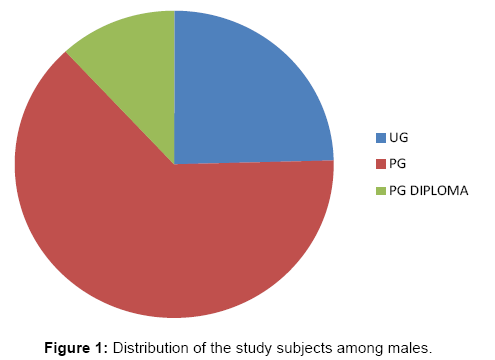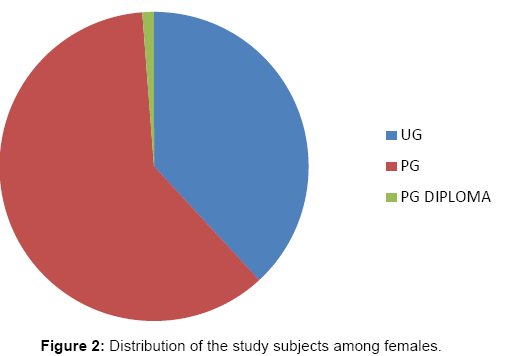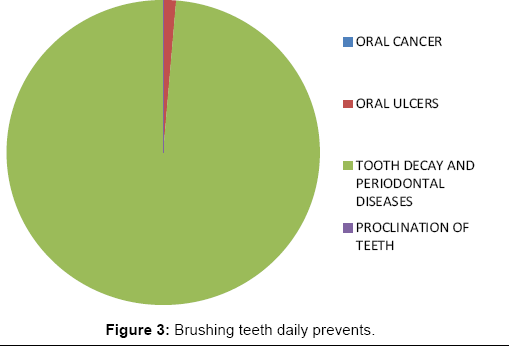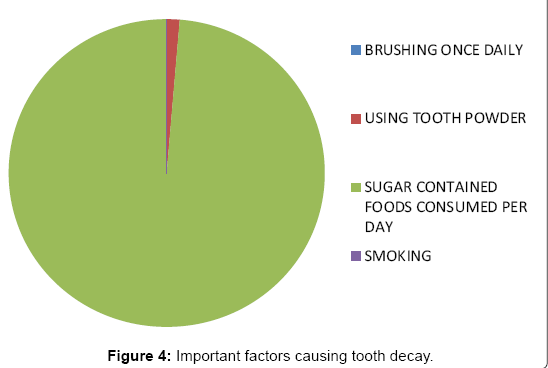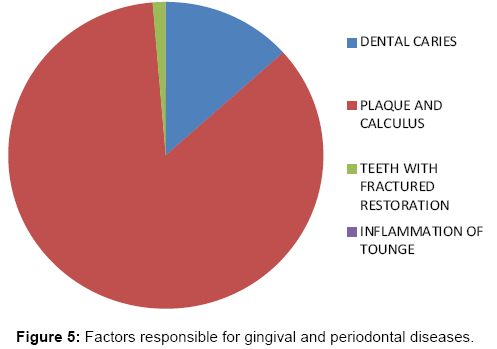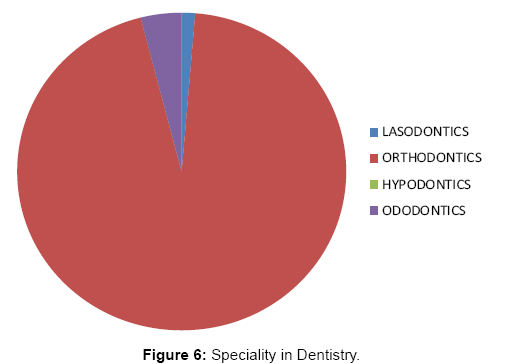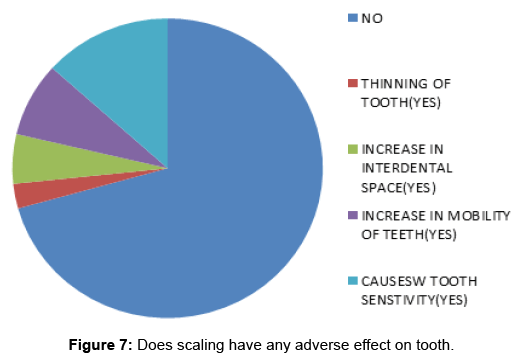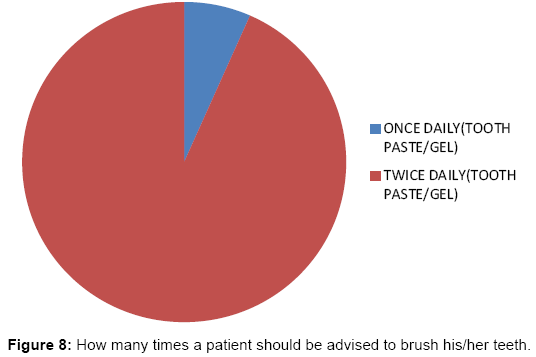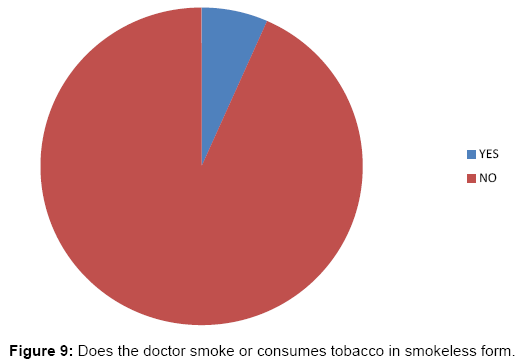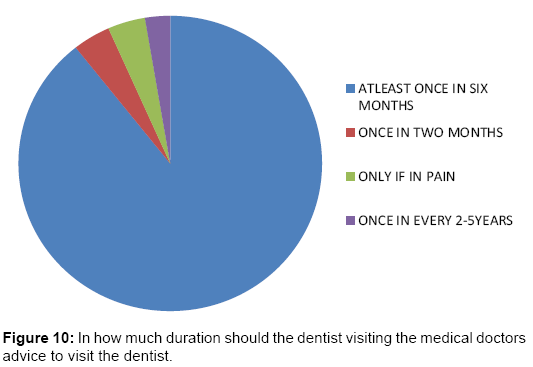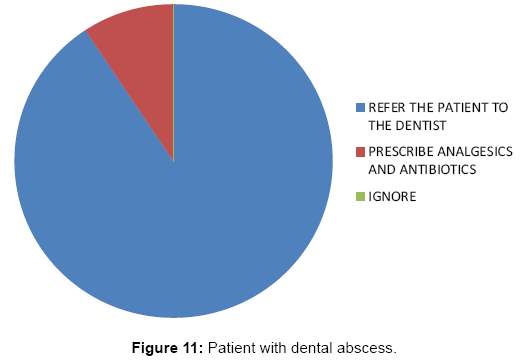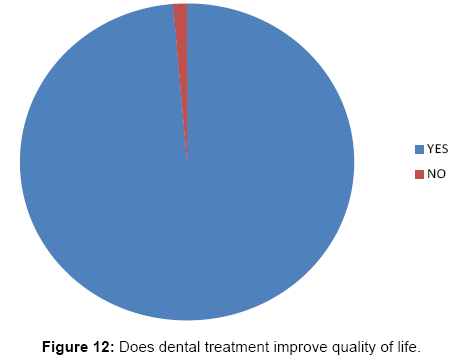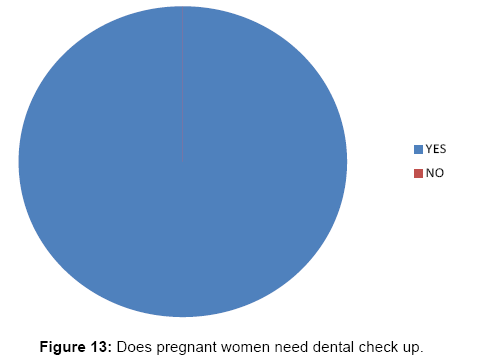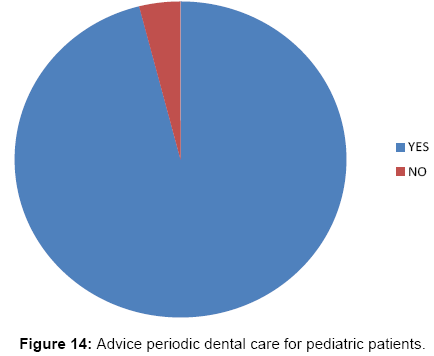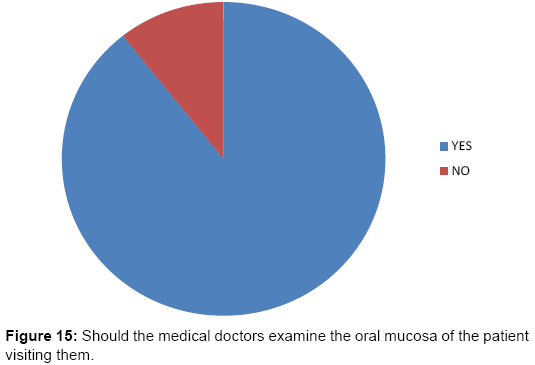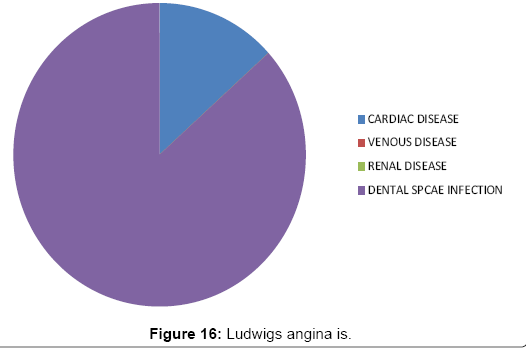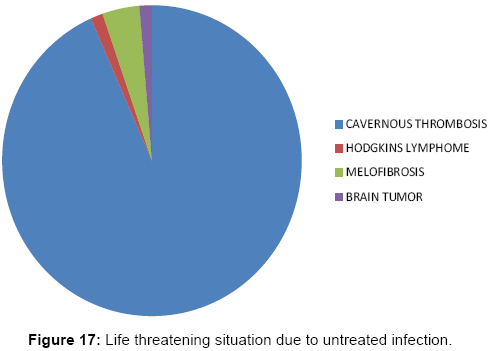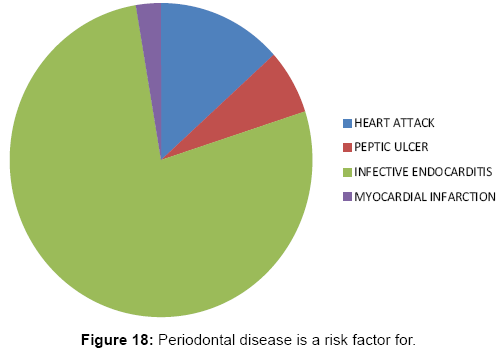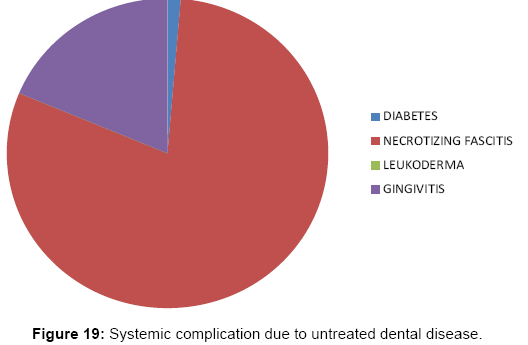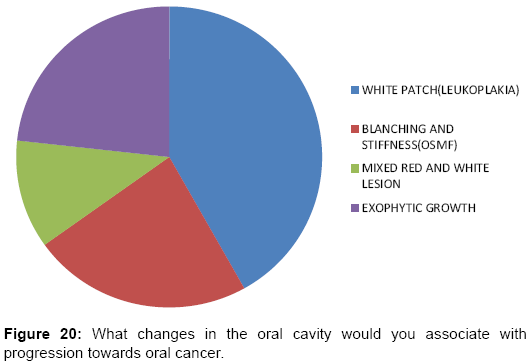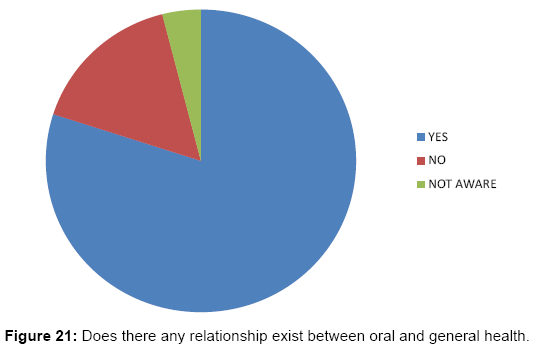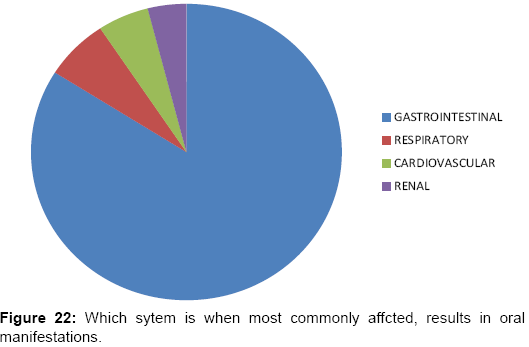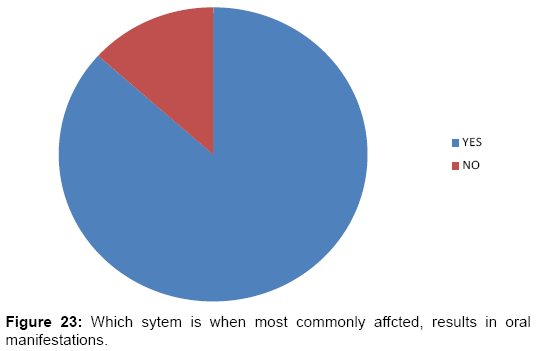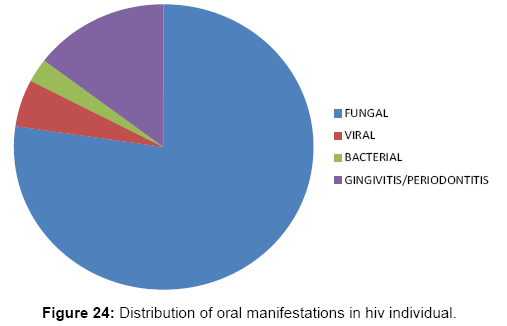Research Article Open Access
A Study Based on Dental Awareness, Knowledge and Attitudes among the Medical Practitioners in and Around Kanpur City (India)
Vishal Mehrotra*, Kriti Garg, Priyanka Sharma, Zowhar Sajid and Rohini Singh
Department of Oral Medicine and Radiology, Rama Dental College Hospital and Research Center, India
- Corresponding Author:
- Vishal Mehrotra, Reader
Department of Oral Medicine and Radiology
Rama Dental College Hospital and Research Center
Kanpur, India
Tel: 09956575812
E-mail: vishal4march@rediffmail.com
Received date: April 02, 2015; Accepted date: June 30, 2015; Published date: July 02, 2015
Citation: Mehrotra V, Garg K, Sharma P, Sajid Z, Singh R (2015) A Study Based on Dental Awareness, Knowledge and Attitudes among the Medical Practitioners in and Around Kanpur City (India). J Interdiscipl Med Dent Sci 3:183. doi: 10.4172/2376-032X.1000183
Copyright: © 2015 Mehrotra V, et al. This is an open-access article distributed under the terms of the Creative Commons Attribution License, which permits unrestricted use, distribution, and reproduction in any medium, provided the original author and source are credited.
Visit for more related articles at JBR Journal of Interdisciplinary Medicine and Dental Science
Abstract
Early detection of oral diseases makes them more amenable to treatment and allows the greatest chance of cure. Lack of general medical practitioner’s knowledge of oral disease has been shown to contribute to delays in referral and treatment, thus significantly affecting the associated morbidity and mortality. The present study was undertaken to assess knowledge, attitude and dental awareness among medical practitioners in Kanpur city, Uttar Pradesh India. The present study is Cross-sectional survey conducted among the medical practitioner in Kanpur city, Uttar Pradesh, India. A random sample of 270 Medical Practitioners were chosen from those registered in Indian Medical Association Kanpur city branch, and a list was made by simple random sampling method. These practitioners included those with MBBS degree/MBBS degree along with higher specialization (MD/MS/Mch) and lastly were medical practitioners, who were diploma holders. The data pertaining to their knowledge, attitude and awareness about oral health was gathered using a self-administered questionnaire. The data was analyzed using descriptive statistics. Results of the study showed that the medical practitioners had good knowledge about dentistry. This study enlightens the dental and medical practitioners to have vast knowledge about oral manifestations of systemic diseases, and thereby help in early diagnosis which can prevent the further spread and thus reduce the risk of morbidity and mortality.
Keywords
Oral diseases; Morbidity; Mortality; Survey; Statistics
Introduction
The mouth is a mirror of health or disease, a sentinel or early warning system. As the gateway to the body, a constant barrage of invaders like bacteria, viruses, parasites, and fungi, challenges the mouth. Many systemic diseases have oral manifestations. These lesions develop on the oral mucosa, tongue, gingiva, dentition, periodontium, salivary glands, facial skeleton, extraoral skin and other related structures [1].
Thus oral cavity is an important diagnostic area not just because it contains derivatives of all of the primary germinal layers, and includes tissues not demonstrable anywhere else in the body, but also because of its role played in diagnosing a number of systemic diseases just because of their oral manifestations [2,3].
In the event that the integrity of the oral tissues is compromised, the mouth can become a source of disease or pathological processes affecting other parts of the body. It can also become a source of contagion by means of contaminated fluids or materials passed to others [4].
Dental knowledge of qualified medical practitioners is different when compared to the general public. Even though they are qualified in the medical faculty their knowledge about dental diseases, relationship of oral health with systemic diseases and life threatening dental diseases are scarce [5].
Thus medical practitioners should also possess basic dental knowledge to uncover signs and symptoms of dental diseases from patients, to provide appropriate treatment or advice to these patients and to act as public health educators.
It is found that very few studies have collected data concerning the dental knowledge of medical practitioners [6]. The present study seeks to assess the dental knowledge, attitudes and awareness of different medical practitioners in Kanpur City towards the systemic conditions affecting oral health.
Materials and Methods
A cross sectional questionnaire survey was carried out to assess the knowledge, attitude and awareness of Medical Practitioners of Kanpur City. A List of medical practitioners was obtained from the IMA (Indian Medical Association, Kanpur branch) and a simple random sample was drawn to reach the required sample size of 300. These practitioners included those with MBBS degree/MBBS degree along with higher specialization (MD/MS/Mch) and lastly were medical practioners, who were diploma holders.
The duration of the study spanned over a period of one month from January 2014 to February 2014. A specially designed questionnaire consisting of three sections was used, these consisted of firstly questions based on the dental knowledge of medical practitioners which included five questions, secondly section based on the attitude of the medical practioners towards dental health, which included eight questions and the last section was based on the awareness of the medical parctioners regarding the significance of systemic conditions related to oral health, which comprised of nine questions. The medical practitioners were approached personally and the purpose of the study was explained along with handing over of the questionnaire. It was also mentioned that responses would remain confidential.
The responses were collected by either telephonic interviews or by personally collecting the completely filled questionnaire from the medical practioners. To maximize the response, a letter was enclosed along with the questionnaire, which emphasized the importance and confidentiality of the survey. All the 300 practitioners were approached, 30 refused, so final sample size was of 270. Non-responders were followed-up with a maximum of two further mails. Out of 270 medical practitioners, 250 returned the completed questionnaires, so response rate was 92.5%.
Out of these 250 medical practitioners none of them agreed to a telephone interview. A key reason given for not being able to participate in telephone interview was lack of time.
Thus in an attempt to gain the opinion of the rest of these medical practitioners (n=250), the questionnaire, were personally collected from them visiting their clinics/hospitals/institutions with which they were attached. This approach resulted in the return of 250 questionnaires, representing 100% response rate.
All demographic data and the quantitative data obtained via the questionnaires returned by DPs were analyzed by SPSS for Windows V15. Frequencies and cross-tabulations were performed.
The reliability of the qualitative data analysis was enhanced by the independent investigation of the responses by a team approach. The team comprised of one Oral Medicine and Radiology expert, and one retired senior medical practioner who was not the part of the survey. From this, level of agreement was assessed.
Data obtained was analyzed using the SPSS (Statistical package for social sciences) version 15. Pearson’s chi-square test was used to find the statistical significance among the medical practitioners for their responses based on dental knowledge, attitude and awareness on systemic conditions related to oral health.
Results
(Table 1A, B, C) represents the study population. Based on their qualification 75 (30%) were undergraduates (UG), 150 (60%) were Post graduates (PG) and 25 (10%) were Postgraduate (PG) diploma holders (Table 1, Figures 1 and 2).
| Qualification | Gender | Total | |
|---|---|---|---|
| √?¬†√?¬†√?¬†√?¬†√?¬† Males√?¬† | √?¬†Females | ||
| UG (MBBS) | 41.3% (31) | 58.6% (44) | 75 |
| PG (MS/MD/Mch) | 53.3% (80) | 46.6% (70) | 150 |
| PG Diploma | 60% (15) | 40% (10) | 25 |
| Total | 50.4% (126) | 49.6% (124) | 250 |
Table 1: Distribution of the study subjects according to the Gender and qualification.
Responses of the Study Subjects Based on their Dental Knowledge (Table 2, Figures 3-7)
Among the study subjects about 246 (98.4%) have said that brushing teeth daily prevents tooth decay and periodontal diseases. Based on their qualification 74 (98.6%) of the UG doctors and 148 (98.6%) of the PG doctors and 24 (94%) of the PG diploma doctors have answered correctly that the proper brushing habits prevents tooth decay and periodontal problems. The differences noted were found to be very highly statistically significant (P<0.001).
| Questions on dental knowledge | Distribution of the study subjects according to their responses | ||||
|---|---|---|---|---|---|
| Total | UG | PG√?¬† | PG diploma | ||
| 250 | 75 | 150 | 25 | ||
| Brushing teeth daily prevents | a) Oral Cancer | 0.8% (02) | 0 | 0.66% (01) | 4% (01) |
| b) Oral Ulcer | 0.8% (02) | 1.3% (01) | 0.66% (01) | 0 | |
| c) Tooth Decay and Periodontal Disease | 98.4% (246) | 98.6% (74) | 98.6% (148) | 96% (24) | |
| d) Proclination of Teeth | 0 | 0 | 0 | 0 | |
| Important factors causing tooth decay (Dental caries) | a) Brushing once daily | 2.8% (07) | 1.3% (01) | 3.3% (05) | 4% (01) |
| b) Using tooth powder | 4.4% (11) | 1.3% (01) | 6.6% (10) | 0 | |
| c) Sugar contained foods consumed per day | 90.8% (227) | 93.3% (70) | 90% (135) | 88% (22) | |
| d) Smoking | 2% (05) | 4% (03) | 0 | 8% (02) | |
| Factors responsible for gingival/periodontal disease | a) Dental caries | 18.8% (47) | 13.3% (10) | 13.3% (20) | 68% (17) |
| b) Plaque and calculus | 80% (200) | 42.6% (64) | 85.3% (128) | 32% (08) | |
| c) Teeth with fractured restoration | 0.8% (02) | 1.3% (01) | 0.6% (01) | 0 | |
| d) Inflammation of the tongue | 0.4% (01) | 0 | 0.6% (01) | 0 | |
| Specialty in dentistry | a)Lasodontics | 0.8% (02) | 1.3% (01) | 0.6% (01) | 0 |
| b) Orthodontics | 93.6% (234) | 94.6% (71) | 95.3% (143) | 80% (20) | |
| c) Hypodontics | 2% (05) | 0 | 2% (03) | 8% (02) | |
| d) Ododontics | 3.6% (09) | 4% (03) | 2% (03) | 12% (03) | |
| Does scaling have any adverse effects on teeth? | a) No | 65.6% (164) | 70.6% (53) | 66.6% (100) | 44% (11) |
| b) Yes | |||||
| 1. Thinning of tooth | 5.6% (14) | 2.6% (02) | 6.6% (10) | 8% (02) | |
| 2. Increase in inter-dental space | 4% (10) | 5.3% (04) | 2.6% (04) | 8% (02) | |
| 3. Increase in mobility of teeth | 5.6% (14) | 8% (6) | 4% (6) | 8% (2) | |
| 4. Cause tooth sensitivity | 19.2% (48) | 13.3% (10) | 20% (30) | 32% (08) | |
Table 2: Responses of the different study subjects based on their dental knowledge.
Among the study subjects about 227 (90.8%) have said that the most important factor resulting in dental caries is the use of sugar contained foods consumed per day. Based on their qualification 70 (93.3%) of the UG doctors and 135 (90%) of the PG doctors and 22 (88%) of the PG diploma doctors have answered correctly that sugar contained food is the most important cause of dental caries. The differences noted were found to be very highly statistically significant (P<0.001).
Among the study subjects 200 (80%) have answered correctly that the factor responsible for gingival and periodontal diseases is the presence of plaque and calculus. Based on their qualification 64 (42.6%) of UG, 128 (85.3%) PG doctors and 08 (32%) PG diploma holders have answered the right option that the plaque and calculus are the most important precipitating factors for gingival and periodontal diseases affecting oral cavity. The differences noted were found to be statistically significant (P<0.05).
Among the study subjects 234 (93.6%) have answered correctly that Orthodontics was a specialty in dentistry. Based on their qualification 71 (94.6%) of UG, 143 (95.3%) PG doctors and 20 (80%) PG diploma holders have answered the right option as orthodontics for specialty in dentistry. The differences noted were found to be statistically significant (P<0.05).
Among the study subjects 164 (65.6%) of the doctors said that scaling has no adverse effect on teeth. It was found that 53 (70.6%) of UG doctors 100 (66.6%) of PG doctors, and only 11 (44%) of the PG diploma doctors have answered the right option that scaling does not have any adverse effect on teeth. The differences noted were found to be statistically significant (P<0.05).
Responses of Study Subjects Based on their Attitudes towards Dental Health (Table 3, Figures 8-15)
Among the study subjects 233 (93.2%) have answered correctly saying that they would suggest their patients to brush their teeth twice daily. Based on their qualification it was seen that the 70 (93.3%) of UG, 140 (93.3%) of PG and 23 (92%) of PG diploma doctors had the attitude of suggesting their patients for dental visit every once in six months. The differences noted were found to be statistically significant (P<0.05).
| Questions on Attitude to dental health | Distribution of the study subjects according to their responses | ||||
|---|---|---|---|---|---|
| Total√?¬† | UG | PG | PG diploma | ||
| How many times a patient should be advised to brush his/her teeth (including the medical practitioners) | a) Once daily (tooth paste/gel) | 68% (17) | 6.6% (05)√?¬†√?¬†√?¬†√?¬†√?¬†√?¬† | 6.6% (10) | 8% (02) |
| b) Twice daily (tooth paste/gel) | 93.2% (233) | 93.3% (70) | 93.3% (140) | 92% (23) | |
| Does the doctor smoke or consumes tobacco in smokeless form | a) Yes | 10% (25) | 6.6% (05) | 10% (15) | 20% (05) |
| b) No | 90% (225) | 93.3% (70) | 90% (135) | 80% (20) | |
| In how much duration should the patients visiting the medical doctors advise to visit the dentist? | a) Atleast once in six month | 81.6% (204) | 89.3% (67) | 76.6% (115) | 88% (22) |
| b) Once in two months | 4.4% (11) | 4% (03) | 5.3% (08) | 0 | |
| c) Only if in pain | 10.4% (26) | 4% (03) | 14.6% (22) | 4% (01) | |
| d) Once in every 2-5 years | 3.6% (09) | 2.6% (02) | 3.3% (05) | 8% (02) | |
| Patient with a dental abscess | a) Refer the patient to dentist | 84% (210) | 90.6% (68) | 76.6% (115) | 88% (22) |
| b) Prescribe antibiotics and analgesics | 16% (40) | 9.3% (07) | 30% (45) | 12% (03) | |
| c) Ignore | 0 | 0 | 0 | 0 | |
| Does dental treatments improve quality of life? | a) Yes | 97.2% (243) | 98.6% (74) | 97.3% (146) | 92% (23) |
| b) No | 2.8% (07) | 1.3% (01) | 2.6% (04) | 8% (02) | |
| Do pregnant women need dental check √ʬ?¬?up? | a) Yes | 99.2% (248) | 100% (75) | 98.6% (148) | 100% (25) |
| b) No | 0.8% (02) | 0 | 1.3% (02) | 0 | |
| Advise periodic dental care for paediatric patients | a) Yes | 94% (235) | 96% (72) | 93.3% (140) | 92% (23) |
| b) No | 6% (15) | 4% (03) | 6.6% (10) | 8% (02) | |
| Should the medical doctors examine the oral mucosa of the patients visiting them | a) Yes | 92% (230) | 89.3% (67) | 90.6% (136) | 88% (22) |
| b) No | 8% (20) | 10.6% (08) | 9.3% (14) | 12% (03) | |
Table 3: Questions on Attitude.
Among the study subjects 225 (90%) accepted that they don’t smoke or consume tobacco in smokeless form. Based on their qualification it was seen that the 70 (93.3%) of UG, 135 (90%) of PG and 20 (80%) of PG diploma doctors do not consume tobacco in smoking or smokeless form because of their awareness regarding ill effects of tobacco on the oral and systemic health. The differences noted were found to be statistically significant (P<0.05).
Among the study subjects 204 (81.6%) have answered correctly saying that they would suggest their patients to visit the dentist atleast once in six months. Based on their qualification it was seen that the 67 (89.3%) of UG, 115 (76.6 %) of PG and 22 (88%) of PG diploma doctors had the attitude of suggesting their patients for dental visit every once in six months. The differences noted were found to be statistically significant (P<0.05).
Among the study subjects 243 (97.2%) accepted that dental treatments have a positive effect on quality of life. Based on their qualification it was seen that the 74 (98.6%) of UG, 146 (97.3%) of PG and 23 (92%) of PG diploma doctors stated that proper dental treatment have a significant effect on the quality of life. The differences noted were found to be statistically significant (P<0.05).
Among the study subjects 248 (99.2%) answered correctly that it is important for pregnant women to undergo routine dental checkup. Based on their qualification it was seen that the 75 (100%) of UG, 148 (98.6 %) of PG and 25 (100%) of PG diploma doctors stated that it is important that the pregnant women should undergo proper dental checkups. The differences noted were found to be statistically significant (P<0.05).
Among the study subjects 235 (94%) answered correctly that periodic dental care and checkups are important for pediatric patients. Based on their qualification it was seen that the 72 (96%) of UG, 140 (93.3 %) of PG and 23 (92%) of PG diploma doctors stated that periodic dental care is important and should be promoted in pediatric population. The differences noted were found to be statistically significant (P<0.05).
Among the study subjects 230 (92%) have answered correctly saying that medical doctors should examine the oral mucosa of the patients visiting them. Based on their qualification it was seen that the 67 (89.3%) of UG, 136 (90.6%) of PG and 22 (88%) of PG diploma doctors had the positive attitude for favoring the examination of the oral cavity by the medical practioners for the patients visiting them. The differences noted were found to be statistically significant (P<0.05).
Responses of Study Subjects Based on their Awareness on Systemic Conditions Related to Oral Health Due to Dental Diseases/ Infections (Table 4, Figures 16-24)
Among the study subjects about 223 (89.2%) of the doctors correctly identified Ludwigs angina as a dental space infection. Based on their qualifications it is seen that 65 (86.6%) UG and 135 (90%) PG and 23 (92%) PG diplomas have answered correctly that Ludwigs angina is a dental space infection. The differences noted were found to be statistically significant (P<0.05).
| Questions on Awareness of systemic conditions related to oral health | Distribution of the study subjects according to their responses | ||||
|---|---|---|---|---|---|
| Total | UG | PG | PG diploma | ||
| Ludwigs angina is a | a) Cardiac disease | 10.8% (27) | 13.3% (10)√?¬† | 10% (15) | 8% (02) |
| b) Venous disease | 0 | 0 | 0 | 0 | |
| c) Renal disease | 0 | 0 | 0 | 0 | |
| d) Dental space infection | 89.2% (223) | 86.6% (65) | 90% (135) | 92% (23) | |
| Life threatening situation due to untreated dental infection | a) Cavernous thrombosis | 88.4% (221) | 93.3% (70) | 84.6% (127) | 96% (24) |
| b) Hodgkin’s lymphoma | 6% (15) | 1.3% (01) | 9.3% (14) | 0 | |
| c) Myelofibrosis | 4.8% (12) | 4% (03) | 5.3% (08) | 4% (01) | |
| d) Brain tumor | 0.8% (02) | 1.3% (01) | 0.6% (01) | 0 | |
| Periodontal disease is a risk factor for | a) Heart attack | 7.6% (19) | 13.3% (10) | 6% (09) | 0 |
| b) Peptic ulcer | 6.4% (16) | 6.6% (05) | 6.6% (10) | 4% (01) | |
| c) Infective endocarditis | 84.8% (212) | 77.5% (58) | 86.6% (130) | 96% (24) | |
| d) Myocardial infraction | 1.2% (03) | 2.6% (02) | 0.66% (01) | 0 | |
| Systemic complications due to untreated dental disease | a) Diabetes | 4%(10) | 1.3%(01) | 5.3%(08) | 4%(01) |
| b) Necrotizing fascitis | 76.8%(192) | 80%(60) | 80%(120) | 48%(12) | |
| c) Leukoderma | 0 | 0 | 0 | 0 | |
| d) Gingivitis | 19.2%(48) | 18.6%(14) | 14.6%(22) | 48%(12) | |
| What changes in the oral cavity would you associate with progression towards oral cancer | a) White patch (leukolakia) | 24% (60) | 24% (18) | 22.6% (34) | 32% (08) |
| b) Blanching and stiffness (Oral submucous fibrosis) | 14% (35) | 13.3% (10) | 13.3% (20) | 20% (05) | |
| c) Mixed red and white lesion | 4% (10) | 6.6% (05) | 3.3% (05) | 0 | |
| d) Exophytic growth | 8% (20) | 13.3% (10) | 5.3% (08) | 8% (02) | |
| e) Non healing ulcer/ erosive lesion | 50% (125) | 42.6% (32) | 55.3% (83) | 40% (10) | |
| Does there any relationship exists between oral and general health? | a) Yes | 90% (225) | 80% (60) | 96% (144) | 84% (21) |
| b) No | 8% (20) | 65% (12) | 4% (06) | 8% (02) | |
| c) Not aware | 2% (05) | 4% (03) | 0 | 8% (02) | |
| Which system most commonly affected resulting in oral manifestations? | a) Gastrointestinal | 90.8% (227) | 84% (63) | 98.6% (148) | 64% (16) |
| b) Respiratory | 4% (10) | 6.6% (05) | 0 | 20% (05) | |
| c) Cardiovascular | 3.2% (08) | 5.3% (04) | 1.3% (02) | 8% (02) | |
| d) Renal | 2% (05) | 4% (03) | 0 | 8% (02) | |
| Do HIV infection results in oral manifestations | a) Yes | 9.2% (230) | 86.6% (65) | 96.6% (145) | 80% (20) |
| b) No | 8% (20) | 13.3% (10) | 3.3% (05) | 20% (05) | |
| Distribution of oral manifestations in HIV individual | a) Fungal | 68% (170) | 77.3% (58) | 63.3% (95) | 68% (17) |
| b) Viral | 10% (25) | 5.3% (04) | 12.6% (19) | 8% (02) | |
| c) Bacterial | 4% (10) | 2.6% (02) | 4% (06) | 8% (02) | |
| d) Gingivitis Periodontitis | 18% (45) | 14.6% (11) | 20% (30) | 16% (04) | |
Table 4: Questions on Awareness of systemic conditions.
Among the study subjects 221 (88.4%) of the doctors have correctly identified cavernous venous thrombosis as a life threatening situation due to untreated dental infection. Based on their qualification 70 (93.3%) UG, 127 (84.6%) PG doctors and 24 (96%) PG diploma have answered that if dental infections are not treated they may lead to life threatening conditions such as cavernous sinus thrombosis. The differences noted were highly statistically significant (P<0.01).
Among the study subjects about 212 (84.8%) of the doctors correctly identified that periodontal diseases are risk factor for developing Infective Endocarditis. Based on their qualifications it is seen that 58 (77.5%) UG and 130 (86.6%) PG and 24 (96%) PG diplomas have answered correctly as periodontal disease is a risk factor for Infective Endocarditis. The differences noted were found to be statistically significant (P<0.05).
Among the study subjects 192 (76.8%) of the doctors have answered that Necrotizing Fascitis is a systemic complication due to untreated dental infection. Based on their qualification 60 (80%) UG, 120 (80%) PG doctors and 12 (48%) PG diploma have answered that Necrotizing Fascitis is a complication due to untreated dental infection. The differences noted were highly statistically significant (P<0.01).
Among the study subjects 125 (50%) of the doctors stated that the change s in the oral cavity which most commonly be associated with progression towards oral cancer is presence of a non-healing ulcer/ erosive lesions. Based on their qualification 32 (42.6%) UG, 83 (55.3%) PG doctors and 10 (40%) PG diploma favored that a non-healing ulcer/ erosive lesion can most commonly be associated with having highest potential for progression towards oral cancer. The differences noted were highly statistically significant (P<0.01).
The remaining 60 (24%) favored a white patch, 35 (14%) favored blanching and stiffness of the oral mucosa, 20 (8%) favored presence of an exophytic growth in oral cavity and lastly 10 (4%) favored a mixed red and white lesion as having high potential for progressing towards oral cancer.
Among the study subjects 225 (90%) of the doctors have answered that there exists a relationship between oral and general health. Based on their qualification 60 (80%) UG, 144 (96%) PG doctors and 21 (84%) PG diploma favored that there exists a relationship between oral and general health. The differences noted were highly statistically significant (P<0.01).
Among the study subjects 227 (90.8%) of the doctors have answered that the system which when most affected results in oral manifestations is the gastrointestinal system. Based on their qualification 63 (84%) UG, 148 (98.6%) PG doctors and 16 (64%) PG diploma stated that the gastrointestinal system is the most commonly affected system resulting in number of oral manifestations. The differences noted were highly statistically significant (P<0.01).
Among the study subjects 230 (92%) of the doctors have answered correctly that HIV infection results in number of oral manifestations. Based on their qualification 65 (86.6%) UG, 145 (96.6%) PG doctors and 20 (80%) PG diploma stated that HIV infection results in number of oral manifestations. The differences noted were highly statistically significant (P<0.01).
Among the study subjects 170 (68%) of the doctors stated that fungal infections are the most common oral manifestations in HIV infected individuals. Based on their qualification 58 (77.3%) UG, 95 (63.3%) PG doctors and 17 (68%) PG diploma favored that fungal infections most commonly affects the oral cavity in HIV infected individuals. The differences noted were highly statistically significant (P<0.01).
The remaining 25 (10%) favored viral infections, 10 (4%) favored bacterial infections and lastly 45 (18%) stated gingivitis and periodontitis as the most common oral manifestation in HIV infected individuals.
Discussion
The mouth and face are highly accessible parts of the body, sensitive to and able to reflect changes occurring internally. The mouth is the major portal of entry to the body and is equipped with formidable mechanisms for sensing the environment and defending against toxins or invading pathogens [4].
Poor oral conditions may adversely affect general health and certain medical conditions may have a negative impact on oral health [7]. The relationship between oral and general health has been increasingly recognized during the past two decades [4]. This cross sectional study was conducted to assess the dental knowledge, attitude and awareness of different medical practitioners of Kanpur City.
Results of the study showed that the medical practitioners had good knowledge about dentistry. In the present study with regards to dental knowledge 227 (90.8%) have said that the most important factor resulting in dental caries is the use of sugar contained foods consumed per day. This result is in coordination with the result of the study conducted by Srinidhi et al. [8] in which 271 (90.3%) of medical practitioners favored sugar contained food as the major cause for the tooth decay. In the present study 200 (80%) medical practioners answered correctly that the factor responsible for gingival and periodontal diseases is the presence of plaque and calculus and 246 (98.4%) said that brushing teeth daily prevents tooth decay and periodontal diseases. These results were slightly higher to those found in the study conducted by Srinidhi et al. [8] where 220 (73.3%) of the doctors said that plaque and calculus is responsible for periodontal disease, and 291 (97%) have said that brushing teeth daily prevents tooth decay and periodontal disease. In a study conducted by Wong and Elischwartz [9] 98 (81%) house officers believed that poor oral hygiene caused periodontal disease and thirty three (27%) of medical students believed that bacteria was the cause and 17 (14%) believed that calculus were the causes of periodontal disease.
In the present study with regards to attitude 204 (81.6%) have answered correctly saying that they would suggest their patients to visit the dentist atleast once in six months. This result is slightly higher as compared to study conducted Srinidhi et al. [8], in which 229 (76.3%) of the medical practitioners suggested their patients to visit the dentist once in six months. In a study conducted by Chandra et al.. [5] in Mangalore it is seen that regular visit of once in six months was suggested by 259 (86.3%) which is slightly high when compared with the attitudes of medical practitioners in Kanpur City.
In the present study with regard to awareness about life threatening dental diseases, about 221 (88.4%) of the doctors have correctly identified cavernous venous thrombosis as a life threatening situation due to untreated dental infection. These results were slightly higher than those found in the study conducted by Srinidhi et al. [8], in which 257 (85.7%) of the doctors had answered correctly that cavernous thrombosis is a life threatening situation due to untreated dental infection. Similar results were found in the study conducted by Chandra et al. [5] in which 255 (85%) of subjects were aware that some dental diseases are life threatening.
Various factors can be attributed to this satisfactory dental knowledge, attitude and awareness of the medical practioners towards oral disease and oral manifestations of systemic diseases, these includes: number of continuing medical education programs being conducted in and around Kanpur city for general medical practitioners, various campaigns, seminars and continuing dental education programs being conducted by the various dental colleges, dental product manufacturers and Indian dental association where even general medical practioners are invited and lastly and most importantly because the MBBS curriculum in India includes a dental posting in which they have an exposure to dental health aspects which improves their awareness, knowledge and attitude towards dentistry [8].
Physicians could play a pivotal role in oral public health [10]. They are endowed to have a basic dental knowledge as they do come across various oral problems among patients while practicing such as tooth ache, swelling in oral cavity, bleeding gums, various white and red patches, if they examine the oral cavity regularly these conditions can be identified at the initial stages. Dental infections are insidious disease and, if left untreated, will continue to destroy both gum tissue and the underlying bone. But whether you are consciously aware of it or not, this infection poses a serious threat to your overall health, hence if medical practitioners identify oral disease at an initial stage it would prove helpful in improving the quality of life of the population [11].
Further research and studies are required to evaluate the adequacy of general physicians, management of dental emergencies. Such studies will help to determine the need for changes in undergraduate and graduate medical education, as well as identify the necessity for continuing education courses to address this topic.
Conclusion
The results of this study clearly demonstrate that medical practitioners had a good.
Knowledge, attitude and awareness about dentistry. However having knowledge does not guarantee that it will be effectively used. Some of the strategies which can help the medical practitioners for upliftment of their knowledge, attitude and awareness towards oral aspects of various systemic and life threatening diseases are as follows; incorporation of basic knowledge about dentistry in medical syllabus, Basic management of dental emergencies in medical practice, various interdisciplinary symposia/lectures/conferences/continuing medical/dental education programs with special emphasis on oral and general health, special study modules or electives in oral health and its correlation with various systemic diseases by involving the dental faculty in teaching should be created.
Most of the general physicians are one group of providers who have an opportunity to encourage oral health and to make a significant difference because of their access to families as a family physician. It is also incumbent upon medical practitioners to keep their knowledge updated with time and get actively involved in oral health, as mouth is a mirror of systemic conditions.
References
- Long RG, Hlousek L, Doyle JL (1998) Oral manifestations of systemic diseases. Mt Sinai J Med 65: 309-315.
- Cheraskin E (1958) Oral manifestations of systemic diseases. J Natl Med Assoc 50: 241-247.
- Epstein JB (1980) The mouth: a window on systemic disease. Can Fam Physician 26: 953-957.
- http://www.nidcr.nih.gov/DataStatistics/SurgeonGeneral/sgr/chap5.htm
- Chandra J, Chandu GN, Prashant GM (2006) Dental awareness and attitudes of medical practitioners of Davangere city. Journal of Indian Association of Public Health Dentistry 8: 38-43.
- Naidu RS, Juman S, Rafeek RN, Singh R, Maharaj K (2008) Oral and dental conditions presenting to medical practitioners in Trinidad and Tobago. Int Dent J 58: 194-198.
- Radha G, ShaikHyder Ali KH, Pushpanjali K (2008) Knowledge and attitude and practice of oral health among nursing staff and nursing students of Bangalore city.Journal of Indian Association of Public Health Dentistry11:17-21.
- SrinidhiS, Ingle NA, Chaly PE, Reddy C (2011) Dental Awareness and Attitudes among Medical Practitioners in Chennai. Journal of Oral Health &Community Dentistry 5: 73-78.
- Eve line KL Wong, Eli Schwartz (1993) Knowledge and attitudes towards dental care among newly graduated medical doctors.
- Ramirez JH, Arce R, Contreras A (2010) Why must physicians know about oral diseases? Teach Learn Med 22: 148-155.
- Patil AV(2010) Awareness of oral health among medical practitioners in Sangamner city-A cross sectional survey.
Relevant Topics
- Cementogenesis
- Coronal Fractures
- Dental Debonding
- Dental Fear
- Dental Implant
- Dental Malocclusion
- Dental Pulp Capping
- Dental Radiography
- Dental Science
- Dental Surgery
- Dental Trauma
- Dentistry
- Emergency Dental Care
- Forensic Dentistry
- Laser Dentistry
- Leukoplakia
- Occlusion
- Oral Cancer
- Oral Precancer
- Osseointegration
- Pulpotomy
- Tooth Replantation
Recommended Journals
Article Tools
Article Usage
- Total views: 21878
- [From(publication date):
August-2015 - Apr 03, 2025] - Breakdown by view type
- HTML page views : 16580
- PDF downloads : 5298

